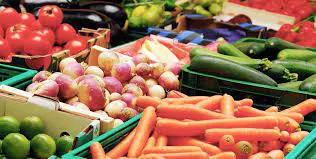Trending

Highest since Feb. 2013 when country was emerging out of BoP troubles
Food inflation hits 17.5% as prices of vegetables, rice skyrocket
Non-food price escalation caused by second gas price hike
CB’s ‘transitory’ claims about inflation losing validity
Inflation jumped to 9.9 percent in the twelve months to November as the increase in food prices accelerated to 17.5 percent while non-food prices rose by 6.4 percent, amid supply side constraints and recovering demand. The November prices measured by the Colombo Consumer Price Index (CCPI), the Central Bank’s preferred gauge of consumer price inflation, rose 2.6 percent from October, marking the largest monthly jump in prices in a long time, reflecting how pronounced the severity in price increases which occur in quick successions is. In the twelve months to October, the prices rose by 7.6 percent, a four-year high, but November prices marked the highest since February 2013 when the prices rose by 9.8 percent during which time the country was coming off from a balance of payment crisis with the support of the International Monetary Fund backed package in early 2012 when the government had to let go the prices of energy and utilities. The so-called core inflation, measured barring the often volatile food, energy and transport, rose by 7.0 percent in the twelve months to November, rising from 6.3 percent in October. While holding the rates steady, the Central Bank last week said there would be further acceleration in the near term inflation but reiterated such price pressures are, “transitory,” a term often used by the United States Federal Reserve to make the case for why there must be more patience before hiking its short term interest rates. But the term is also increasingly losing its meaning as the US saw their consumer prices hitting a three-decade high in October when preferred consumer price gauge rose by 6.2 percent. The markets, which were preparing for rising global interest rates next year had to face a new reality with the detection of Omicron, a new coronavirus variant which would provide a more pressing case for leading central banks to wait before turning hawkish. However, even if the Omicron turns out to be a variant of concern as claimed by the experts in the World Health Organisation, central banks and governments are handicapped to provide anymore assistance and provide markets with additional liquidity as such stimulus worth of trillions of dollars have caused supply chains to break down sending prices upwards and creating shortages in some commodities as demand conditions remained robust throughout the pandemic. The Central Bank also said last week it observed firming up of demand conditions, which partly contributed to the multi-year high consumer inflation readings in recent months. At a more granular level, Sri Lanka’s food prices rose by 5.3 percent between October and November, pushing up the twelve months prices to 17.5 percent. The prices of vegetables rose the most in November followed by rice, milk powder, chicken, fish, coconut, confectionary and bakery and a few others, while only a very few items in the food basket saw their prices easing from October levels such as fresh fruits and dried fish. Meanwhile, non-food inflation rose by 1.2 percent in November from October levels pushing up the annual price increase to 6.4 percent from 5.4 percent as the effects of the second price hike in domestic gas reverberated. Further, prices of transport, money spent on restaurants and hotels and grooming activities such as hair cuts and shaving also saw increases as people started increasingly returning to in-person activities which they put off for months due to fear of catching COVID-19.




